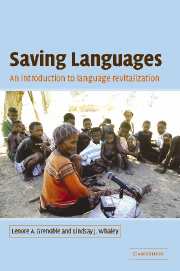2 - Issues in language revitalization
Published online by Cambridge University Press: 04 December 2009
Summary
Introduction
Language revitalization involves counter-balancing the forces which have caused or are causing language shift. At a general level a similar set of forces can be said to operate in most language loss situations, but every case is, in fact, distinct. There are unique historical, economic, societal, and political factors that have affected the manner in which language shift occurs. Therefore, a successful language revitalization program requires addressing a complex set of factors that leads individuals in a particular community to make the choices about language use that they do. It requires, to as great a degree as possible, an understanding of diverse issues such as how uniform attitudes about a local language are within a community, the contexts in which speakers of one language interact with speakers of other languages, the spiritual or cultural values that may be associated with a language, national and regional policies concerning language teaching, and so on.
There is an understandable temptation when confronted with the monumental task of revitalization to look for that one single program which holds the key to success for different language groups around the globe, a tested framework that can be replicated for each situation. This simply does not exist, nor can it exist, because for every individual community a specific combination of issues enters into the picture. Each situation is unique, although there is a commonality of factors shared by most communities.
- Type
- Chapter
- Information
- Saving LanguagesAn Introduction to Language Revitalization, pp. 21 - 49Publisher: Cambridge University PressPrint publication year: 2005



